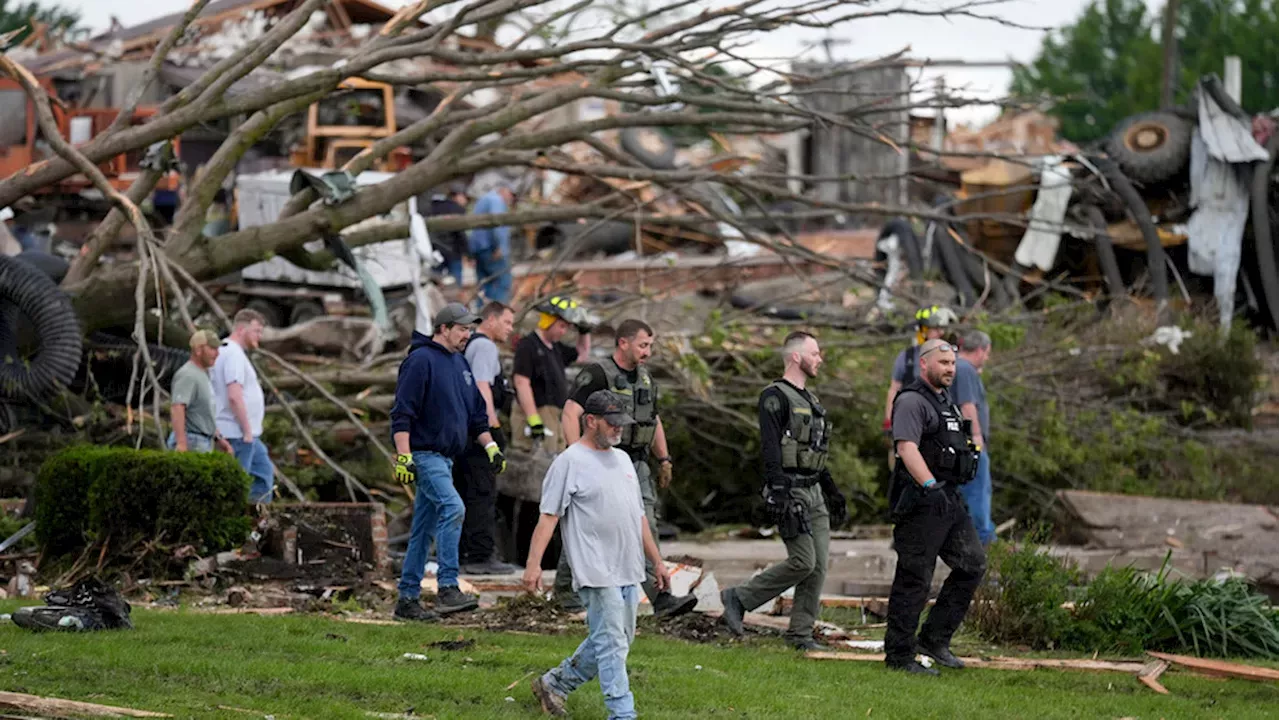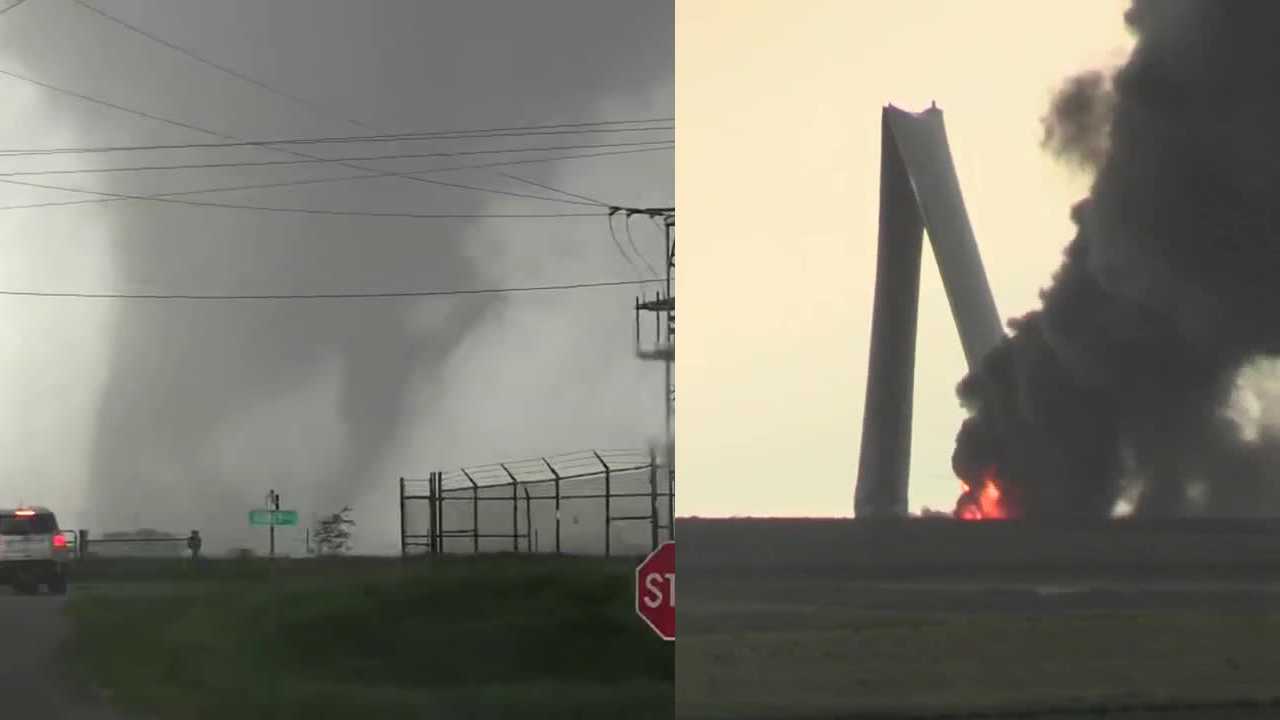Tornado History in Iowa

Tornado iowa – Iowa has a long and destructive history with tornadoes. The state is located in the center of Tornado Alley, a region of the United States that is particularly prone to tornadoes. Iowa has been hit by more than 1,000 tornadoes since 1850, more than any other state in the country. The deadliest tornado in Iowa history occurred in 1968, when an F5 tornado killed 65 people and injured over 500.
When a tornado touches down in Iowa, it can leave a path of destruction in its wake. These powerful storms can cause extensive damage to property and infrastructure, and can even be deadly. While tornadoes can occur anywhere in the state, some areas are more prone to them than others.
For more information on the history of tornadoes in Iowa, visit iowa tornados . The Iowa Tornado Project is a valuable resource for anyone who wants to learn more about these storms.
The factors that contribute to tornado formation in Iowa include the state’s location in the middle of the country, its flat terrain, and its humid climate. Iowa is also located in a region where warm, moist air from the Gulf of Mexico meets cold, dry air from the north. This creates a favorable environment for the formation of thunderstorms, which can produce tornadoes.
Iowa is a state that is frequently hit by tornadoes. Tornadoes are a common occurrence in the state, and they can cause significant damage to property and infrastructure. Iowa tornados have been known to cause fatalities, and they can also cause injuries to people and animals.
It is important to be aware of the risk of tornadoes in Iowa, and to take precautions to stay safe during tornado season.
Impact of Tornadoes on Iowa’s Landscape and Communities
Tornadoes have had a significant impact on Iowa’s landscape and communities. The state’s landscape is dotted with tornado scars, including fields of flattened crops, destroyed buildings, and uprooted trees. Tornadoes have also caused significant economic damage in Iowa, destroying homes, businesses, and infrastructure. In addition to the physical damage, tornadoes can also have a lasting impact on the mental health of survivors.
Tornado Research and Mitigation
Studying and tracking tornadoes has become crucial for understanding their behavior and mitigating their devastating effects. Scientists employ various methods to gain insights into these destructive forces, including:
Observational Studies
- Direct observations from storm chasers and trained spotters provide valuable real-time data on tornado characteristics.
- Weather radar systems detect and track tornadoes, offering crucial information about their location, intensity, and movement.
- Satellite imagery helps monitor cloud patterns and identify potential tornado-producing environments.
Numerical Modeling
Computer simulations of atmospheric conditions help scientists understand the dynamics of tornado formation and evolution. These models incorporate data from observational studies to predict tornado behavior and forecast their potential impact.
The midwestern state of Iowa is no stranger to tornadoes. In fact, the state sees an average of 50 tornadoes per year. While most tornadoes in Iowa are weak and cause little damage, there have been some notable exceptions. One such exception was the tornado that struck Parkersburg, Iowa, in 2008. The tornado was an EF5, the highest rating on the Enhanced Fujita Scale, and caused extensive damage to the town.
More recently, Iowa was hit by a series of tornadoes in 2021. These tornadoes caused widespread damage across the state, including in the cities of Des Moines and Cedar Rapids. For the latest information on tornadoes in Iowa, please visit the iowa tornado today website.
Mitigation Strategies
To mitigate tornado damage, communities implement various strategies, including:
Tornado Shelters
- Underground storm cellars and reinforced safe rooms provide protection from the destructive force of tornadoes.
- Schools, hospitals, and other public buildings are often equipped with designated tornado shelters for community safety.
Tornado Warnings and Evacuation Plans
- Advanced warning systems, such as NOAA Weather Radio and mobile alerts, provide timely notifications of impending tornadoes.
- Evacuation plans Artikel designated safe zones and evacuation routes to minimize risk in the event of a tornado.
Examples of Successful Mitigation Efforts in Iowa
Iowa has implemented successful tornado mitigation initiatives, including:
- The Iowa Tornado Warning System, which provides real-time alerts and updates on tornado activity.
- Community-based tornado spotter networks, which enhance early detection and warning.
- Tornado shelters in schools and public buildings, ensuring protection for residents and students.
Tornado Climatology and Trends

Iowa is situated within the central United States, a region commonly known as Tornado Alley. This area experiences a high frequency of tornadoes, making it crucial to understand the climatology and trends associated with these severe weather events in Iowa.
The destructive force of tornadoes in Iowa is a sobering reminder of the power of nature. From the recent iowa tornado today to the devastating tornadoes of the past, Iowa has faced the wrath of these storms. The aftermath leaves a trail of destruction, but also a testament to the resilience of Iowans as they rebuild and recover.
Tornadoes in Iowa exhibit distinct seasonal patterns, with the peak season occurring during the spring and summer months. The frequency of tornadoes tends to be highest in May and June, although tornadoes can occur throughout the year.
Intensity and Distribution
Iowa experiences a range of tornado intensities, from weak EF0 tornadoes to destructive EF5 tornadoes. The majority of tornadoes in Iowa fall within the EF0 to EF2 intensity range, with EF3 and higher tornadoes being less common.
The distribution of tornadoes across Iowa is not uniform. Some areas, such as the central and southern portions of the state, experience a higher frequency of tornadoes compared to other regions.
The recent tornado outbreak in Iowa has left a trail of devastation across the state. Several communities have been severely impacted, and emergency responders are working tirelessly to provide assistance. For the latest updates on the situation, including information on affected areas and safety precautions, visit the iowa tornado today website.
The tornadoes that touched down in Iowa were part of a larger weather system that brought severe weather to the Midwest. The National Weather Service has issued tornado warnings for several counties in Iowa, and residents are urged to take shelter immediately if a warning is issued for their area.
Trends and Climate Change
Over the past several decades, there have been no significant trends in the frequency or intensity of tornadoes in Iowa. However, some studies suggest that climate change may influence tornado behavior in the future.
Climate change models predict an increase in the frequency and intensity of extreme weather events, including tornadoes. It is possible that Iowa may experience more frequent and severe tornadoes in the future as a result of climate change.
Comparison to Other Regions, Tornado iowa
Compared to other regions of the United States, Iowa experiences a relatively high frequency of tornadoes. The state ranks among the top 10 states in terms of tornado frequency.
However, the intensity of tornadoes in Iowa is generally lower compared to other regions, such as the Great Plains. This is likely due to the fact that Iowa is located on the eastern edge of Tornado Alley.
Tornado Impacts on Infrastructure and Economy

Tornadoes can have a devastating impact on Iowa’s infrastructure and economy. The high winds and debris can damage or destroy buildings, roads, bridges, and utilities. This can lead to widespread power outages, disruptions to transportation, and loss of access to essential services. The economic costs of tornadoes can be significant, including the cost of repairs, lost productivity, and decreased property values.
Damage to Infrastructure
Tornadoes can cause significant damage to Iowa’s infrastructure. The high winds can rip through buildings, causing structural damage or even complete collapse. Debris can also be hurled into buildings, causing further damage. Tornadoes can also damage roads and bridges, making them impassable. This can disrupt transportation and make it difficult for emergency responders to reach affected areas.
Economic Costs
The economic costs of tornadoes can be significant. The cost of repairs can be substantial, especially for large buildings or infrastructure projects. Tornadoes can also cause lost productivity, as businesses may be forced to close due to damage or power outages. In addition, tornadoes can decrease property values, which can have a long-term impact on the local economy.
Strategies for Repair and Rebuilding
After a tornado, communities must work quickly to repair and rebuild damaged infrastructure. This can involve clearing debris, repairing buildings, and restoring power and other utilities. In some cases, it may be necessary to relocate entire communities if the damage is too severe.
Reducing the Economic Impact of Tornadoes
There are a number of strategies that can be used to reduce the economic impact of tornadoes. These include:
- Building codes: Enforcing strict building codes can help to ensure that buildings are more resistant to tornado damage.
- Tornado shelters: Providing tornado shelters in homes and businesses can provide a safe place for people to ride out a tornado.
- Early warning systems: Early warning systems can give people time to take shelter before a tornado strikes.
- Education: Educating the public about tornadoes and how to stay safe can help to reduce the number of injuries and deaths.
By taking these steps, Iowa can reduce the economic impact of tornadoes and make its communities more resilient to these storms.
Tornado-Related Case Studies: Tornado Iowa
Iowa has experienced numerous significant tornadoes throughout its history. These events have caused widespread damage and loss of life, highlighting the need for improved tornado preparedness and mitigation. By examining case studies of past tornadoes, we can identify the factors that contribute to their formation, assess their impacts, and learn valuable lessons to enhance our ability to respond to and recover from these devastating events.
The following table summarizes the key characteristics and impacts of some of the most notable tornadoes that have occurred in Iowa:
| Tornado | Date | Location | EF Scale | Path Length (miles) | Fatalities | Injuries | Damage (millions of dollars) |
|---|---|---|---|---|---|---|---|
| Parkersburg Tornado | May 25, 2008 | Parkersburg | EF5 | 7.2 | 6 | 57 | $1 billion |
| Clarinda Tornado | March 3, 1984 | Clarinda | F4 | 14.5 | 2 | 15 | $100 million |
| Fairfield Tornado | April 11, 1973 | Fairfield | F4 | 11.2 | 5 | 150 | $50 million |
| Waverly Tornado | May 28, 1968 | Waverly | F5 | 16.8 | 8 | 35 | $25 million |
| Des Moines Tornado | June 17, 1944 | Des Moines | F4 | 5.0 | 13 | 50 | $15 million |
These case studies provide valuable insights into the behavior and impacts of tornadoes in Iowa. They highlight the importance of early warning systems, robust building codes, and effective emergency response plans. By learning from these past events, we can work to mitigate the risks associated with tornadoes and enhance our ability to protect lives and property.
Tornado Awareness and Education
Tornado awareness and education are crucial for Iowa residents, given the state’s vulnerability to these devastating storms. Schools, community organizations, and media play vital roles in promoting tornado safety and ensuring the public is prepared for potential events.
Educational Initiatives
- School-based programs: Incorporating tornado safety into school curricula, conducting drills, and organizing educational campaigns for students and staff.
- Community workshops and presentations: Hosting community events to provide information on tornado risks, preparedness measures, and emergency response plans.
- Media outreach: Collaborating with local media outlets to disseminate tornado-related news, safety tips, and updates during severe weather events.
Tips for Staying Informed
- Monitor local weather forecasts and warnings.
- Sign up for weather alerts and emergency notifications.
- Stay informed about tornado safety measures.
- Have a designated safe place in your home or workplace.
- Practice tornado drills regularly.
Tornado Recovery and Resilience
In the aftermath of a devastating tornado, communities face a complex and challenging process of recovery and rebuilding. This process involves not only repairing physical infrastructure but also addressing the emotional and economic toll on survivors.
Successful tornado recovery requires a collaborative effort from government agencies, non-profit organizations, and community members. Each group plays a vital role in providing support and resources to those affected by the disaster.
Government’s Role
- Provide immediate emergency assistance, such as food, shelter, and medical care.
- Coordinate long-term recovery efforts, including debris removal, infrastructure repair, and economic development.
- Offer financial assistance to individuals and businesses affected by the tornado.
Non-Profit Organizations’ Role
- Provide direct services to survivors, such as counseling, case management, and financial assistance.
- Coordinate volunteer efforts and distribute donated goods.
- Advocate for policies that support tornado recovery and resilience.
Community Members’ Role
- Assist neighbors in need by providing food, shelter, and emotional support.
- Participate in cleanup efforts and volunteer with local organizations.
- Support local businesses and economic development initiatives.
Successful tornado recovery efforts in Iowa have demonstrated the importance of collaboration and community resilience. In the aftermath of the 2013 Moore, Oklahoma tornado, the community came together to support survivors and rebuild the town. Local businesses donated goods and services, volunteers worked tirelessly to clear debris and provide assistance, and government agencies provided funding and resources.
To build resilience to future tornado events, communities can implement a variety of strategies, such as:
- Enacting building codes that require tornado-resistant construction.
- Developing emergency plans and conducting tornado drills.
- Educating the public about tornado safety and preparedness.
- Investing in research and technology to improve tornado forecasting and warning systems.
By working together, communities can recover from the devastation of a tornado and build resilience to future events.